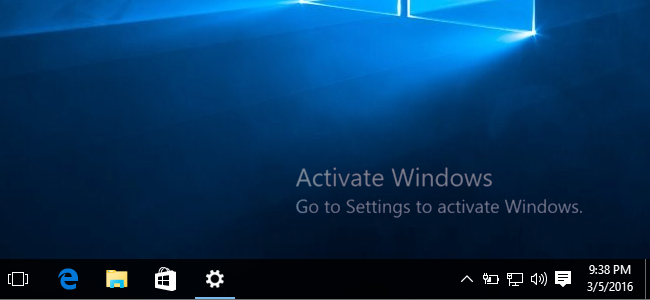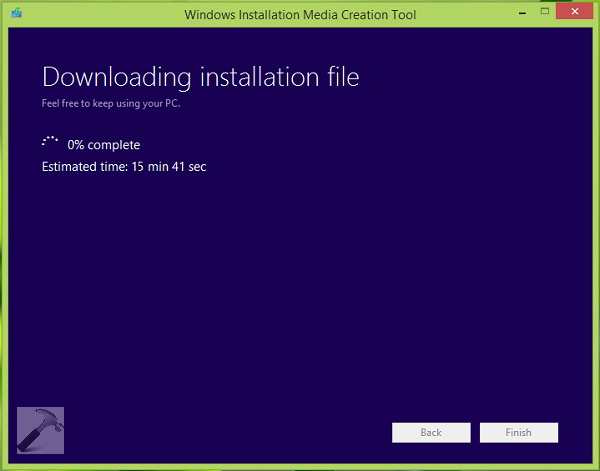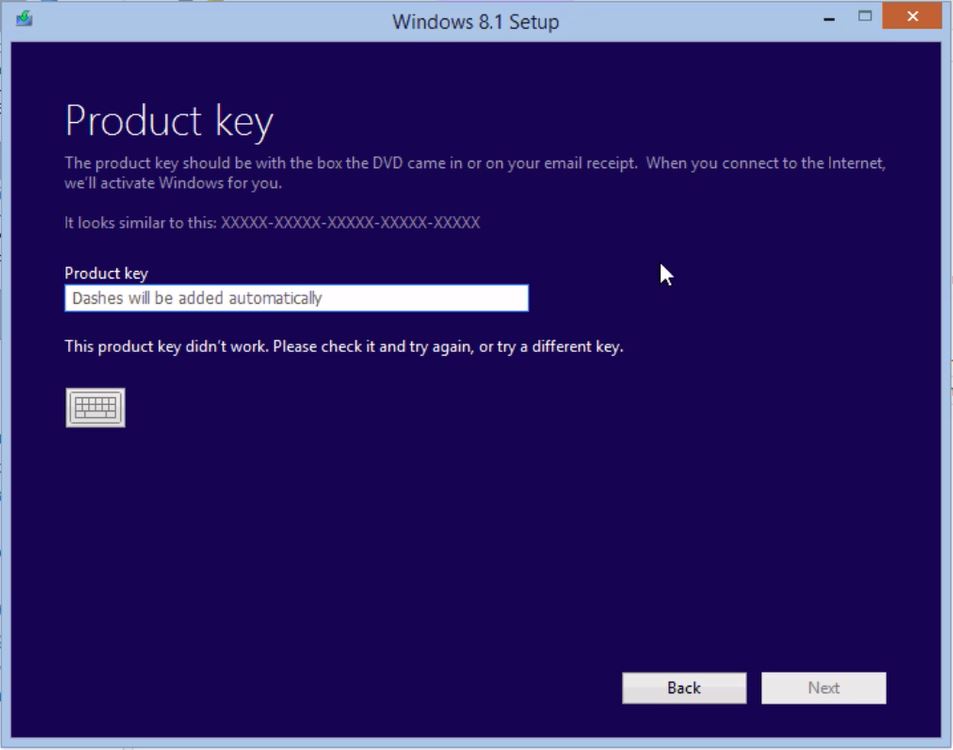If you want to install or reinstall Windows 7, Windows 8.1, or Windows 10, you can go to the software download website and create your own installation media using either a USB flash drive or a DVD.
- Microsoft offers a simple tool to create a bootable USB on Windows, but there is no such tool for Mac users. Fortunately the process is pretty easy, if you know how. Plus, this is a great opportunity to get Microsoft’s last version of Windows for free.
- The first and most obvious choice for creating Windows 10 installation media is the Windows Media Creation Tool. This application allows you to get the Home or Pro versions of Windows 10, and you can pick from the 32-bit or 64-bit version What Is the Difference Between 32-bit & 64-bit Windows?
Whether you are dual-booting your Mac or formatting a new PC, the best way to get Windows 10 is through a fresh installation, not an upgrade. But you’ll need to create a bootable Windows 10 USB drive first. The process is a little more complicated if you’re using a Mac.
Microsoft offers a simple tool to create a bootable USB on Windows, but there is no such tool for Mac users. Fortunately the process is pretty easy, if you know how.
Plus, this is a great opportunity to get Microsoft’s last version of Windows for free. Remember, on July 29, Microsoft will end its free upgrade to Windows 10Act NOW to Keep Your Windows 10 Upgrade Free After July 29Act NOW to Keep Your Windows 10 Upgrade Free After July 29Microsoft has confirmed that the free Windows 10 upgrade will expire. After July 29, a Windows 10 license will cost $119. We show you how to become eligible to install Windows 10 for free, even...Read More for existing Windows 7 or 8 users. So if you have an old laptop, you could use that license to activate and dual-boot Windows 10 on your Mac.
What You Will Need
- An 8GB or larger USB drive whose data you don’t mind losing. You can pick up a new 8GB drive for as little as $5.
- Your MacBook power adapter should be plugged in. You don’t want the laptop running out of battery in the middle of creating the bootable drive.
- This method obviously requires a valid Windows 10 license to activate the operating system.
- An active Internet connection to download any updates required.
1. Download the Windows ISO
Microsoft has free downloadable ISO files for Windows 10 on its official site. There are two things to keep in mind when you download:
- Make sure it’s Windows 10 version 1511How to Upgrade to Windows 10 Version 1511 NowHow to Upgrade to Windows 10 Version 1511 NowCan't seem to install the Windows 10 Fall Update? It wouldn't be the Microsoft we know and love, if there wasn't some kind of screw-up along the line. Let us help!Read More—you’ll see the digits 1511 in the file name if it is. Older versions don’t let you use Windows 7 or 8 keys to activate it directly.
- Don’t worry about “K”, “N”, “KN”, “Simple Language” or other suffixes. Just download the plain Windows 10. Those suffixes are for lighter versions of Windows made for Europe and South Korea, due to anti-trust litigation against Microsoft.
Download:Official Windows 10 ISO
Once you have downloaded the ISO, keep it in a location you can easily find later, like your desktop or downloads folder.
2. Plug in Your USB Drive
Disconnect any other USB hard drive, optical drive, or other storage media you have connected.
3. Start Boot Camp Assistant
Mac OS X’s built-in Boot Camp Assistant (BCA) is capable of creating the bootable Windows 10 installer USB drive, so you don’t need any third-party apps.
To start BCA, press command+spacebarto bring up SpotlightSearch More Efficiently In Mac OS X With Our Top Spotlight TipsSearch More Efficiently In Mac OS X With Our Top Spotlight TipsSpotlight has been a killer Mac feature for years, with Cupertino regularly schooling Redmond in the art of desktop search. Here are a few tips to help you find more on your Mac.Read More, type “Boot Camp Assistant” (without the quotes), and press Enter.
Click Continue at the introduction dialog box.
4. Configure Boot Camp
Check the box for “Create a Windows 7 or later install disk”.
The other options will probably be greyed out, but in case they aren’t, check the second box for “Download the latest Windows support software from Apple”, and don’t check the third box.
Click Continue when done.
5. Choose Your ISO Image & USB Drive
Browse to and select the Windows 10 ISO file you downloaded.
In Destination Disk, make sure you see your 8GB USB drive.
Windows Media Creation Tool

Click Continue when done.
6. Copy The Image to Disk
BCA will format this USB drive, so again, make sure it has no important data on it that you can’t lose.
All the data will be wiped.Click Continue to proceed. The installation process will now start and you don’t need to interact at all. Just let it run.
If you’re on a MacBook, don’t shut the MacBook’s lid! It’s an instinctive act that several of us do when we aren’t using the laptop, but this will put your Mac to sleep and interrupt the process.
When everything is done, you’ll see a window that says “The Windows support software has been saved.”

Click Quit to finish your procedure, unmount and unplug your USB drive. Congratulations! This is now a bootable Windows 10 installer.
While Booting: USB vs. UEFI
When you go to install Windows 10 on a PC with this USB drive, your motherboard might not boot with it, even if you have set to boot with the USB first. It’s a common problem with a simple solution.

Go to your motherboard’s BIOS settingsHow to Enter the BIOS on Windows 10 (And Older Versions)How to Enter the BIOS on Windows 10 (And Older Versions)To get into the BIOS, you usually press a specific key at the right time. Here's how to enter the BIOS on Windows 10.Read More by tapping F2 or Delete as it powers on. In the Boot settings, you will likely see two options for your USB drive that seem similar, titled something like “USB Mass Storage Device” and “UEFI USB Device”.
Choose UEFI instead of USB Mass Storage. Save the new settings, exit BIOS, and restart. This time, your computer should boot into your Windows 10 installer USB drive.
UEFI is a new type of firmware for motherboardsWhat Is UEFI And How Does It Keep You More Secure?What Is UEFI And How Does It Keep You More Secure?Read More instead of the traditional BIOS, and BCA uses it by default when creating USB installation media. It makes no real difference to a regular user, so just change the setting and you’re good to go.
Alternate Method to Create the Installer
Windows Installation Media Creation Tool Download
The Boot Camp Assistant is the easiest way to make a bootable USB installer for Windows 10, but some users have reported problems with it. El Capitan users, in particular, have noted that BCA does not offer the “Create a Windows 7 or later install disk” option at all. In case you face this problem, there is an alternative to create your bootable drive.
Use VirtualBox to create a virtual Windows machine on MacHow to Use VirtualBox: User's GuideHow to Use VirtualBox: User's GuideWith VirtualBox you can easily install and test multiple operating systems. We'll show you how to set up Windows 10 and Ubuntu Linux as a virtual machine.Read More. Then it’s just a matter of using the Windows Media Creation Tool or any of the other methods to create Windows installation mediaHow to Create Windows 10 Installation MediaHow to Create Windows 10 Installation MediaRegardless of how you arrived at Windows 10, there's a way to create your own installation media. Sooner or later you might need it. Let us show you how to be prepared.Read More. It takes more resources and the process has more steps than BCA, so use this as the last option.
This method will usually not use UEFI firmware, so the BIOS settings change won’t be needed.
Are You Dual-Booting Windows 10?
With all of these options, you should be able to easily make Windows 10 installation media on your Mac. The question is, are you going to use it?
As the July 29 deadline approaches, we are curious to know how many of you are dual-booting Mac OS X and Windows 10 already, and how many of you plan to do it in the near future? Is Windows 10 better on a Mac than earlier versions of the operating system?
Explore more about: Install Software, USB Drive, Windows 10.
cool
Will this process work for a Windows PC?
Is there a simple way to change my BIOS to recognize booting from a flash drive?You can also just mount the ISO, format the USB as FAT with MBR and just drag and drop the files from the ISO to the USB. It boots fine with EFI :-)
Windows 10 is larger than 4 GB. I can't drag it to the USB
Media Creation Tool lets you create a Windows 10 installation USB drive or download its .ISO file that you can burn on to a DVD to install the operating system on a different computer.
However, before Media Creation Tool can be used, you must either download the tool on your PC, or run it directly from the website.
Note: Even though obtaining Windows 10 using Media Creation Tool is free, you must purchase a valid license key in order to activate Windows after the installation.
Here’s how you can get Media Creation Tool and use it to obtain Windows 10:
- ■Launch Microsoft Edge
Click the Microsoft Edge icon from the taskbar. This launches Microsoft Edge web browser and loads either the default or your custom homepage. Although Microsoft Edge is used for this example, you can use any other web browser of your choice.
■Get to the Download Windows 10 page
Type https://www.microsoft.com/en-us/software-download/windows10 in the web browser’s address bar, and press Enter. This takes you to the Download Windows 10 page. From here you can either upgrade your current OS to the latest version of Windows 10, or download Media Creation Tool.
■Run Media Creation Tool
Scroll down to the Create Windows 10 installation media section, click Download tool now, click Run from the box that pops up at the bottom, and click Yes in the User Account Control confirmation box. This downloads and automatically initializes Media Creation Tool. Alternatively, you can also click Save in the box, and choose a location in your local hard drive to download the tool for later use.
■Choose how to use Media Creation Tool
Click Accept on the Applicable notices and license terms window, and either leave the Upgrade this PC now radio button selected or select Create installation media (USB flash drive, DVD, or ISO file) for another PC, and click Next. Where the former option lets you upgrade the current version of your Windows to the latest version of Windows 10 (1803 at the time of this writing), selecting the latter one allows you to create a Windows 10 installation USB drive or download the .ISO file of the operating system.
■Choose Windows 10 edition
Uncheck the Use recommended options for this PC box, pick your preferred edition of Windows 10 using the enabled drop-down lists, and click Next. This ensures that you get the correct version of Windows 10 according to the hardware you want to install it on. Alternatively you can leave the Use recommended options for this PC box checked if you’re OK with the currently selected version of the operating system.
■Choose a media
Either leave the USB flash drive radio button selected or select ISO file (selected for this example), and click Next. This prompts for your input depending on the option you selected, and begins downloading Windows 10. Where leaving the former option selected requires you to connect a blank USB drive to your PC, selecting the latter option prompts you to pick a location on your local hard drive to save the .ISO file to.
■Complete the process
Click Finish after the download or USB creation completes. This cleans up the temporary files that the Media Creation Tool may have deployed, and closes the wizard once done. If you’ve created a USB flash drive, you can disconnect it from the PC and connect it to a different computer to begin installing Windows 10. Likewise, if you’ve downloaded the .ISO file, you can burn it on a DVD, and then use the media to install Windows 10 on a computer.